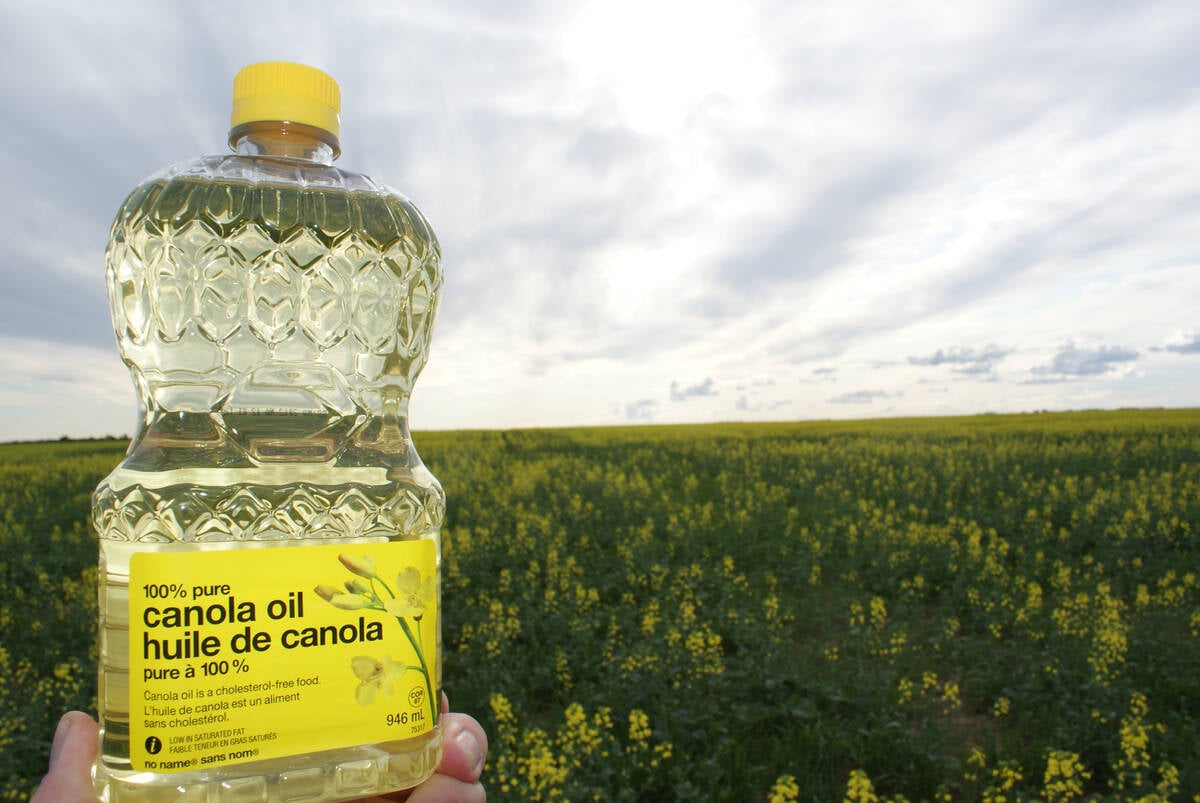Saskatchewan
Warm weather has assisted harvest operations in Saskatchewan with growers across the province combining and swathing. Combining operations are slightly behind the five-year average for this time of year.
Growers in southwestern Sask-atchewan are furthest along.
Across the province, combining of pea, lentil and winter wheat crops is most progressed.
Above-average yields are reported in crops that have been harvested.
South
Warm weather has assisted crop development and harvest operations. In the southwest, most peas have been combined and growers are working on spring cereal and canola fields. Reports are of above-average yields.
Read Also

Rising vegetable oil demand may offset bad biofuel news
Global biodiesel/renewable diesel production is expected to decline for the first time in a decade. Bad timing for a canola industry looking for new markets.
Topsoil moisture is largely adequate, although some fields in the southeast are short.
There are reports of large grasshopper populations, but damage is minimal.
Some producers are seeding winter wheat.
Central
Producers are swathing canola fields, and some growers are starting to combine wheat, although more time is required for cops to reach maturity.
Yields are above-average in western regions, although there are dry conditions on cropland and pastures across central Saskatchewan.
Bertha armyworm damage is reported in eastern regions, as well as hail damage in the Wynyard, Rose Valley, Holdfast and Craik areas.
North
Harvest is underway, although the region has received rain, and warm weather will be needed for much of September to get the crop off.
Hail has damaged crops in the Nipawin, Duck Lake and Turtleford areas. There are reports of bertha armyworms damaging fields in some parts of the region.
Manitoba
Harvest continues, although some canola and cereal crops were damaged by rain and hail over the Labour Day long weekend.
Winter wheat harvest is nearing completion and seeding has started.
Southwest
Crops have matured with help from above average temperatures, although isolated thunderstorms have caused damage.
Early reports are for above average yields in barley and spring wheat crops.
Winter cereal yields and quality are average, and winter wheat seeding is underway in the southern parts of the region.
Growers in the most southern parts of the region are furthest along with the canola harvest.
Northwest
The region has received above normal temperatures as well as rain.
Harvest is underway with yields of 35 bushels an acre expected for spring wheat, 100 bu. an acre for oats and 35 to 50 bu. an acre for canola.
Soybean fields are rated fair to excellent, although conditions vary in the Dauphin and Fork River areas, while soybean crops in the Grandview and Gilbert Plains area are further behind in development.
Sclerotinia is evident in canola fields. There are issues with ergot in cereal crops in the Roblin area.
Hay yields are average with above average quality.
Central
The region saw rain over the Labour Day long weekend, which delayed harvest.
Altona, Treherne, Notre Dame, St. Claude, Haywood and Winkler reported hail and strong winds.
Yields on spring wheat vary from 50 to 80 bu. an acre. Oat yields range from 90 to 160 bu. an acre and barley from 90 to 110.
Shattering is reported in some canola swaths, which were also spread across fields by winds during storms. Yields on crops vary from 40 to 60 bu. an acre.
Corn and soybean fields require more time to reach maturity.
Eastern
The winter wheat harvest is complete, and some growers are close to finishing spring cereals and canola.
Winter wheat yields are 70 to 80 bu. an acre, spring wheat is 45 to 60 bu. an acre and barley is 85 bu. an acre. Oat yields range from 100 to 125 bu. an acre while canola is averaging 40 bu. per acre.
Interlake
Harvest continues after canola swaths were damaged by hail and strong winds at the end of August.
Yields are better than expected in areas not affected by excess moisture.
ALBERTA
Crop conditions are positive, and there is the expectation of above-average yields, despite the presence of sclerotinia and blackleg.
South
Harvest is furthest along in southern Alberta with good quality crops reported.
The winter wheat harvest was underway at the end of August along with special crops such as dry beans and potatoes.
Soil moisture has been an issue in the region and a concern for winter wheat growers. The region has continued to see dry weather in early September.
Central
Growers in east-central Alberta started harvest operations ahead of others in the region.
Peas and barley in the Stettler area are being harvested with good yields.
Soil moisture conditions are dry in some areas. The region has continued to see dry and warm weather as harvest operations pick up.
North
Crop development in northeastern Alberta is behind normal this year because of cool conditions over the growing season.
The region has continued to see varying amounts of rain in late August and early September, slowing harvest work.
In the northwest, crop development and harvest operations have also been delayed. There, harvest work started with canola swathing.
Both Drayton and Athabasca received rainfalls of at least 20 millimeters in late August.
Peace River
Field peas were among the first crops to be combined. Canola development varies, but swathing is underway. Soil moisture ratings in the region are positive, and the potential is for above-average yields.














